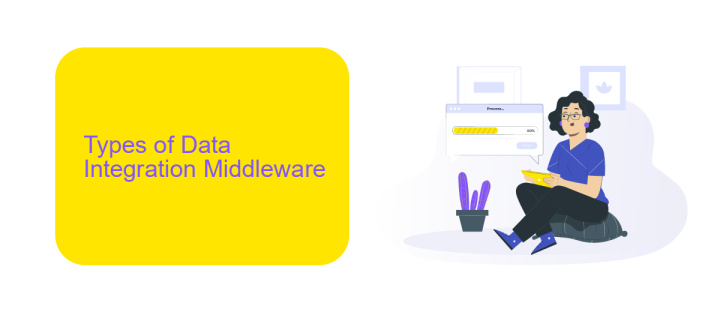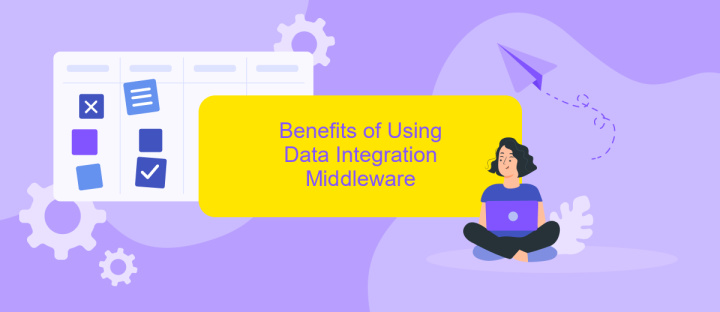Data Integration Middleware
Data integration middleware serves as a crucial bridge in modern IT ecosystems, enabling seamless communication and data exchange between disparate systems and applications. By standardizing data formats and protocols, this middleware facilitates real-time data access, enhancing operational efficiency and decision-making processes. In an era where data is a key asset, effective integration solutions are indispensable for businesses striving for agility and innovation.
Introduction
Data integration middleware is a crucial component in modern IT ecosystems, facilitating seamless data flow between disparate systems and applications. As businesses grow, the need for efficient data integration becomes paramount to ensure data consistency, accuracy, and accessibility across various platforms. Middleware solutions act as intermediaries that simplify and streamline the integration process, making it easier to manage complex data environments.
- Centralized data management
- Real-time data synchronization
- Enhanced data quality and consistency
- Scalability and flexibility
- Reduced operational costs
One effective solution for setting up these integrations is ApiX-Drive, a service that automates data transfer between different systems without the need for coding. ApiX-Drive supports a wide range of applications and platforms, making it a versatile tool for businesses aiming to improve their data integration processes. By leveraging such middleware solutions, organizations can achieve more efficient workflows, better decision-making, and a competitive edge in the market.
Types of Data Integration Middleware

Data integration middleware can be categorized into several types, each serving distinct purposes. One common type is Enterprise Service Bus (ESB), which facilitates communication between various applications by translating messages and managing data flow. Another type is Extract, Transform, Load (ETL) tools, designed to extract data from multiple sources, transform it into a suitable format, and load it into a target database or data warehouse. These tools are essential for consolidating data from disparate systems into a unified repository.
In addition to ESB and ETL, API management platforms like ApiX-Drive play a crucial role in data integration. ApiX-Drive offers a user-friendly interface for configuring integrations without extensive coding knowledge. This service allows businesses to automate data exchange between different applications, ensuring real-time synchronization and reducing manual intervention. Cloud-based middleware solutions are also gaining popularity, providing scalable and flexible integration options that can adapt to dynamic business needs. Overall, selecting the right type of middleware depends on the specific requirements and complexity of the data integration tasks at hand.
Benefits of Using Data Integration Middleware

Data Integration Middleware offers numerous advantages for businesses aiming to streamline their operations and enhance data accuracy. By acting as a central hub for data exchange, it simplifies the process of integrating disparate systems and applications, ensuring a seamless flow of information across the organization.
- Improved Data Consistency: Middleware ensures that data is consistent and up-to-date across all integrated systems, reducing the risk of errors and discrepancies.
- Enhanced Operational Efficiency: By automating data transfers and transformations, it minimizes manual intervention, freeing up valuable time for employees to focus on more strategic tasks.
- Scalability: Middleware solutions like ApiX-Drive offer scalable integration capabilities, allowing businesses to easily add new applications and data sources as they grow.
- Cost Savings: By reducing the need for custom coding and manual data management, middleware can significantly lower operational costs.
- Real-time Data Access: Middleware enables real-time data synchronization, providing businesses with timely insights and improving decision-making processes.
Incorporating a robust Data Integration Middleware like ApiX-Drive can be a game-changer for organizations. It not only simplifies the integration process but also enhances the overall efficiency and reliability of data management. As businesses continue to evolve, the need for seamless data integration becomes increasingly critical, making middleware an indispensable tool in the modern data landscape.
Challenges of Implementing Data Integration Middleware

Implementing data integration middleware presents several challenges that organizations must navigate to ensure seamless data flow and usability. One of the primary issues is the complexity of integrating disparate data sources, which often have different formats, structures, and protocols. This complexity can lead to significant time and resource investments.
Another challenge is maintaining data quality and integrity during the integration process. Inconsistent or inaccurate data can compromise the overall effectiveness of the middleware, leading to poor decision-making and operational inefficiencies. Additionally, ensuring real-time data synchronization can be difficult, especially when dealing with large volumes of data.
- Complexity of integrating diverse data sources
- Maintaining data quality and integrity
- Ensuring real-time data synchronization
- Handling large volumes of data
- Security and compliance concerns
Services like ApiX-Drive can help mitigate some of these challenges by providing automated data integration solutions. ApiX-Drive allows for seamless connection between various applications and platforms, ensuring data consistency and real-time synchronization. By leveraging such tools, organizations can streamline their data integration processes and focus on deriving value from their data.
- Automate the work of an online store or landing
- Empower through integration
- Don't spend money on programmers and integrators
- Save time by automating routine tasks
Future of Data Integration Middleware
The future of Data Integration Middleware is poised to be transformative, driven by advancements in artificial intelligence and machine learning. These technologies will enable middleware solutions to not only connect disparate data sources but also to intelligently analyze and optimize data flows in real-time. This will lead to more efficient and insightful data management, allowing businesses to make better-informed decisions faster. Additionally, the rise of cloud-based solutions will further democratize access to advanced data integration tools, making them more accessible to organizations of all sizes.
Another significant trend will be the increasing focus on user-friendly, no-code or low-code platforms such as ApiX-Drive. These platforms simplify the integration process, enabling even non-technical users to set up and manage data connections with ease. As businesses continue to seek agility and speed in their operations, the demand for such intuitive solutions is expected to grow. ApiX-Drive, for instance, offers a versatile and easy-to-use interface that allows users to automate workflows and integrate various applications without the need for extensive technical knowledge, showcasing the direction in which the industry is headed.
FAQ
What is Data Integration Middleware?
Why is Data Integration Middleware important?
How does Data Integration Middleware work?
Can Data Integration Middleware handle real-time data processing?
What are some common use cases for Data Integration Middleware?
Do you want to achieve your goals in business, career and life faster and better? Do it with ApiX-Drive – a tool that will remove a significant part of the routine from workflows and free up additional time to achieve your goals. Test the capabilities of Apix-Drive for free – see for yourself the effectiveness of the tool.


